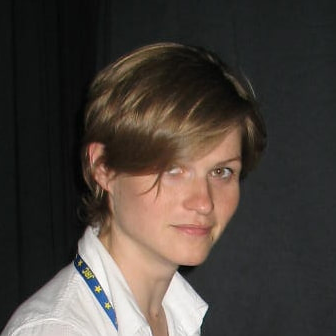Recent Progress on Best Practice Protocols for Vegetation-Oriented Sensors Characterization, Calibration and Validation
A special issue of Remote Sensing (ISSN 2072-4292). This special issue belongs to the section "Satellite Missions for Earth and Planetary Exploration".
Deadline for manuscript submissions: closed (30 September 2023) | Viewed by 606
Special Issue Editors
Interests: calibration; characterization; validation of high spectral resolution optical remote sensing instruments; data quality assessment; uncertainties quantification; remote sensing
Interests: metrology; hyperspectral instruments calibration and characterisation; uncertainty evaluation; cal/val of satellite optical imagers sensors
Interests: cal/val; spectro(radio)meter calibration and characterisation; proximal sensing; environmental remote sensing; optical Earth observation; near-ground EO platforms; field spectroscopy
Special Issues, Collections and Topics in MDPI journals
Special Issue Information
Dear Colleagues,
The dynamic response of vegetation to changing environmental conditions can be revealed if sufficient and accurate information is acquired on vegetation status, health, and photosynthetic activity. A well-known proxy of photosynthesis is sun-induced fluorescence (SIF), which represents a very low proportion of the energy received by vegetation from the total quantity of sunlight (just a few mW m−2 sr−1 nm−1 from the total signal). This is a signal of extremely low magnitude, and its measurement is very sensitive to uncertainties that could lead to erroneous results. Some of these uncertainties can be related to instrumentation performance and use under field conditions. In recent years, ESA prepared a new mission, FLEX (Fluorescence Explorer), dedicated to globally measuring the SIF emission from terrestrial vegetation; it will be launched in 2025. To be of societal benefit, space-based observations must be validated and vegetation fluorescence better understood. To do this, it is necessary to have data from multiple fixed locations close to the ground as well as measurements in the spatial domain. This necessitates the direct comparison and analysis of measurements from multiple instruments and platforms. The essential base for making measurements comparable across scales is well-described data products, which include information about the features of the equipment employed as well as uncertainty tracing from the raw data to the SI units.
Fiducial Reference Measurements (FRMs) are a suite of independent, fully characterized, and metrologically traceable ground measurements that follow the guidelines outlined by the Quality Assurance Framework for Earth Observation (QA4EO) of the Committee on Earth Observation Satellites (CEOS). Suites of FRM-like activities are currently running for several satellite products, such as FRM4VEG, FRM4SOC, FRM4SST and FRM4ALT (meaning FRM for vegetation, satellite ocean color, sea surface temperature, and altimetry, respectively).
This Special Issue is linked to the COST Action "Optical synergies for spatiotemporal SENsing of Scalable ECOphysiological traits" (SENSECO) WG4 activities, and its purpose is to collect all procedures that could assist in preparation of achieving “FRM4FLEX”-like status for products of the local, regional and global vegetation photosynthetic activity.
The remote sensing community is invited to submit their works related to any methodological procedures that could be used to facilitate future validation campaigns for satellite missions (FLEX, Sentinel) having the investigation of terrestrial vegetation behavior as a goal. Any works on topics including, but not limited to the following, are welcome:
- Novel vegetation-oriented spectroradiometer development and improvement, including their calibration and characterization;
- Best practice for traceable laboratory characterization, calibration and validation of optical sensors used in field measurements for vegetation photosynthetic activity monitoring;
- Comparisons including calibration sources, laboratory and in situ-based vegetation sensors measurements;
- SI traceability and end-to-end uncertainty budgets—from calibration to field measurements;
- Best practice to achieve high-quality field measurements;
- Measurements from permanently deployed sites and their data quality monitoring;
- Methods showing how data from multiple sensors can be combined to provide a correct overview of vegetation photosynthetic activity at local, regional or global scale.
Dr. Laura Mihai
Dr. Aga Bialek
Dr. Alasdair MacArthur
Guest Editors
Manuscript Submission Information
Manuscripts should be submitted online at www.mdpi.com by registering and logging in to this website. Once you are registered, click here to go to the submission form. Manuscripts can be submitted until the deadline. All submissions that pass pre-check are peer-reviewed. Accepted papers will be published continuously in the journal (as soon as accepted) and will be listed together on the special issue website. Research articles, review articles as well as short communications are invited. For planned papers, a title and short abstract (about 100 words) can be sent to the Editorial Office for announcement on this website.
Submitted manuscripts should not have been published previously, nor be under consideration for publication elsewhere (except conference proceedings papers). All manuscripts are thoroughly refereed through a single-blind peer-review process. A guide for authors and other relevant information for submission of manuscripts is available on the Instructions for Authors page. Remote Sensing is an international peer-reviewed open access semimonthly journal published by MDPI.
Please visit the Instructions for Authors page before submitting a manuscript. The Article Processing Charge (APC) for publication in this open access journal is 2700 CHF (Swiss Francs). Submitted papers should be well formatted and use good English. Authors may use MDPI's English editing service prior to publication or during author revisions.







